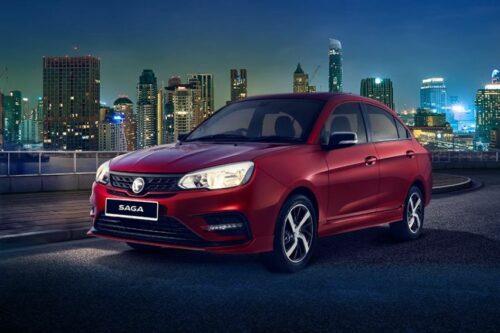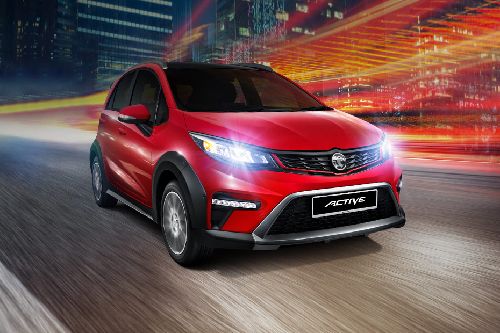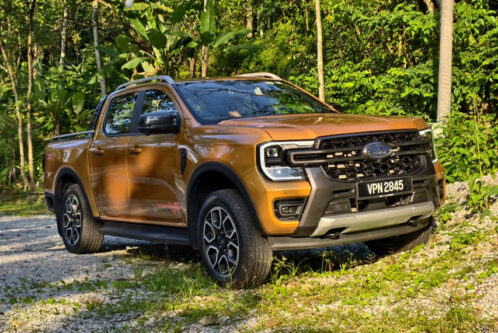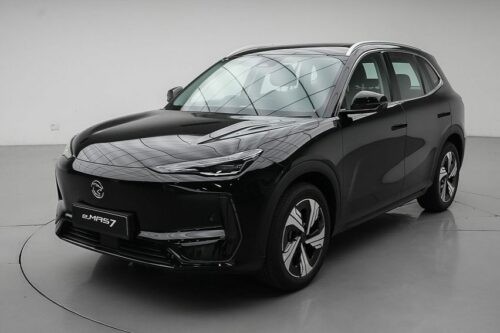Proton X50 vs. Hyundai Kona: The compact crossover fight

The Malaysian B-segment crossover market is at its prime, with automakers introducing new and stylish products in the segment. The latest being the Kona crossover coming from the house of South Korean carmaker, Hyundai. This super sporty offering is available in three trim options, all completely built-up units imported from Korea. Another striking offering comes from our very own national automaker Proton, the X50. It was launched a while back and secured high sales figures for the brand.
Now with both the cars in the market, it is obvious that customers will have a hard time deciding which one to pick. It is for the same reason we decide to put the two cars against each other and come with a solution. So, let's put the X50 and Kona in the ring and put them against each other in terms of exterior, interior, performance, safety, and price.
So, let's get started -
Proton X50 vs. Hyundai Kona: Dimensions

|
Dimensions |
Proton X50 |
Hyundai Kona |
|
Length |
4,330 mm |
4,165 mm |
|
Width |
1,800 mm |
1,800 mm |
|
Height |
1,609 mm |
1,550 mm |
|
Wheelbase |
2,600 mm |
2,600 mm |
|
Ground Clearance |
180 mm |
170 mm |
|
Boot Capacity |
330 litres |
361 litres |
The specs mentioned above clarifies that compared to the new Kona, the X50 is a bit longer, taller, and also has 10 mm higher ground clearance. It may not seem much of a difference on papers but on-road every millimetre makes a difference. However, it is the boot area where the Kona has secured some major points.
Proton X50 vs. Hyundai Kona: Exterior
From the looks of it, both Proton X50 and Hyundai Kona portrays a rugged and sporty appeal. They look modern and carry a design theme to impress young buyers. Instead of these basic similarities, the two cars have a very distinct front fascia that liking of which is subjective.
The X50 is almost identical to the Binyue with certain clues shared with its bigger sibling, the X70. It is a good thing as both the models are appreciated for their design language. The Kona, on the other hand, the brand’s cascading grille and other sporty inclusions give it a unique, distinctive look.
The X50’s standard exterior feature kit includes LED projector headlamps and LED DRLs. With LED fog lamps (executive & premium), auto headlamps (executive & premium), roof rails (premium), and auto-sensing front wipers (flagship) available in trims above.

Hyundai Kona’s standard feature kit, on the other hand, includes halogen headlamps, rear fog lamps, LED DRLs, and electric ORVM with auto-folding. The other two trims get front fog lamps, and LED taillights. While two-tone body colour and roof rails are limited to the range-topping Turbo variant.
It seems like the Kona has a lot more to offer in the base trim, however, as we move up the variant ladder the exterior features remain more or the same.
Proton X50 vs. Hyundai Kona: Interior
Proton and Hyundai have put in a lot of effort to make the X50 and Kona comfortable and convenient, both for the driver and passenger. Let’s see what the two compact crossovers offer, starting with the X50.
Its standard feature includes fabric upholstery, rear air-con vents, N95 cabin filter, power windows, push start button, cruise control with speed limiter, 8-inch infotainment system with voice command, navigation, music streaming, weather forecast, smartphone & Bluetooth connectivity, 4G & Wi-Fi, and three USB ports. The mid- and range-topping models further include full-colour LCD meter combination, remote engine start, 6-way driver power seat, auto air-con system, and Proton link app providing remote control and vehicle status. The auto-dimming rearview mirror and the panoramic sunroof are exclusive to the range-topping Flagship model.

Coming to the Kona crossover, its base 2.0 trim gets fabric seats, power windows, single-zone manual air-con system, day & night IRVM, smart key with push start button, auto light control, three USB ports, navigation, and cruise control. On the connectivity front is a 7-inch touch display with AUX-in, USB, Bluetooth, MP3 playback, voice recognition, and Apple CarPlay & Android Auto. The 2.0 Active and 1.6 Turbo variants, on the other hand, feature leather upholstery, 8-wat power seats with 2-way lumbar support, 4.2-inch TFT LCD information cluster, full auto climate control, auto wipers, and a heads-up display.
Limited to the range-topping trim is a wireless charging system, smart cruise control, idle stop & go, and high beam assist.
Proton X50 vs. Hyundai Kona: Engine
All four variants of Proton X50 are powered by the same 1477 cc, 3-cylinder, 12valve, DOHC, turbo mill, available in two tunings. In the base Standard, Executive, and Premium trim it makes 150 PS at 5,500 rpm and 226 Nm from 1,500 to 4,000 rpm, while in the range-topping Flagship model it develops 177 PS ar 5,500 rpm and 255 Nm at 1,500 to 4,000 rpm. What’s common is the 7-speed dual-clutch gearbox with a manual mode that transmits power to the front wheels.
The Kona, on the other hand, is offered in two engine options - a Nu 2.0 Atkinson and a Gamma 1.6 T-GDi. The former is a 1999 cc mill making a maximum power of 149 PS at 6,200 rpm and a peak torque of 180 Nm at 4,000 rpm. The power is sent to the front wheels via a 6-speed automatic transmission. The range-topping model is powered by a 1,591 cc unit making 177 PS at 5,500 rpm and 265 Nm from 1,500 to 4,500 rpm. The powerplant is paired to a 7-speed dual-clutch gearbox.
Proton X50 vs. Hyundai Kona: Safety
The X50 is packed with several standard safety features, included in the list is - 4 SRS airbags, ABS with EBD and BA, auto brake hold, electronic stability control, traction control system, hill hold assist, hill descent control, rear parking sensor, reverse camera, and Immobiliser & anti-theft alarm. The Premium and Flagship models further benefit from tyre pressure monitoring system, and 360 camera (replacing the standard reverse camera). However, exclusive to the 1.5 TGDi Flagship model is the auto park assist and blind-spot information system.

As for the Hyundai compact crossover, its standard safety kit features six airbags, ABS, ESC, VSM, EBD, TCS, hill start assist control, downhill brake control, ISOFIX, and rear parking assist. Adding to the list are blind-spot collision warning and rear cross-traffic collision warning system limited to Active and Turbo trim. Now, exclusive to the 1.6 Turbo model is several Hyundai SmartSense features like Lane Keeping Assist, Smart Cruise Control, Forward Collision Warning, Forward Collision-Avoidance Assist, and Driver Attention Warning.
Proton X50 vs. Hyundai Kona: Price
Proton X50 price and variants -
X50 1.5T Standard: RM79,200
X50 1.5 Executive: RM84,800
X50 1.5 Premium: RM93,200
X50 1.5 TGDi Flagship: RM103,300
Kona price and variants -
Kona 2.0: RM115,888
Kona 2.0 Active: RM130,888
Konda 1.6 Turbo: RM143,888
Conclusion
The Proton X50 is less expensive than the 2020 Kona, however, it still is packed with a reasonably good standard feature kit. And moving up the trim ladder, the National automaker has included several features giving the vehicle a premium look & feel.
As the all-new Kona, its high price tag is justified by its long feature list than be it the cabin comforting options or its safety profile.
Proton X50 vs Hyundai Kona Comparison
Proton X50 Related Stories
- News
- Featured Stories
Proton Car Models
Don't Miss
Malaysia Autoshow
Trending & Fresh Updates
- Latest
- Popular
You might also be interested in
- News
- Featured Stories
Proton Featured Cars
- Latest
- Popular
Latest Proton X50 Car Videos on Zigwheels

Compare & Recommended

|

|

|

|

|
|
Seating Capacity
5
|
7
|
7
|
5
|
5
|
|
Fuel Type
Petrol
|
Petrol
|
Petrol
|
Petrol
|
Electric
|
|
Engine
1499
|
1496
|
1496
|
998
|
-
|
|
Power
179
|
104
|
101
|
98
|
94
|
|
Torque
290 Nm
|
136 Nm
|
133 Nm
|
140 Nm
|
160 Nm
|
|
Transmission Type
Dual Clutch
|
Automatic
|
Automatic
|
CVT
|
Automatic
|
|
Ground Clearance
-
|
220 mm
|
220 mm
|
200 mm
|
-
|
|
|
Trending SUV
- Latest
- Upcoming
- Popular
Compare
You can add 3 variants maximum*- Brand
- Model
- Variant
































































